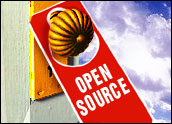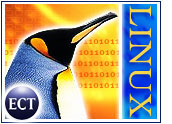
Sun Microsystems officially started down the path to an open-source version of Solaris on Tuesday with a partial release of source code which ultimately will be OpenSolaris. Sun also launched OpenSolaris.org as a community site for the project.
Being released under the Common Development and Distribution License (CDDL), which was reviewed and approved by the Open Source Initiative, the full OpenSolaris distribution is expected in the second quarter. This is according to Sun executive vice president John Loiacono and CEO Scott McNealy, who were joined by vice president Tom Goguen (freshly acquired from Apple) to brief the media via conference call yesterday afternoon.
Taking It Seriously
McNealy sought to debunk grumblings from industry watchers and other vendors on the company’s entrance into the open-source community with Solaris, starting with a short history lesson on Sun’s long involvement in open source dating back to Bill Joy’s days working with Berkeley Systems Distribution (BSD).
According to McNealy, Sun is now one of the biggest contributors to open source through the company’s involvement in Open Office, Gnome and NFS. In conjunction with the inclusion of 1,600 patents assigned under the CDDL license for OpenSolaris, he told reporters he believes the company “is not only doing what other open source companies are doing but leapfrogging ahead.”
The patent assignment includes current patents as well as those that are expected to be approved in the future. Sun also intends to build all future commercial Solaris distributions from the OpenSolaris code base so as not to have disparate frameworks.
Carefully Chosen
The CDDL was ultimately selected for three reasons, according to Loiacono: easy reuse of code; changes in licensing do not impact developers using the original license; and the CDDL includes a requirement to share modifications. While other licenses were considered, such as the GNU General Public License (GPL) or the Apache license, these did not meet those three core goals.
Sun has set its sights on three distinct sectors to build adoption and spawn contributions — academia and independent developers; developing nations with less economic means to spend on market-leading technology; and enterprises with Solaris infrastructures seeking more granular control over the operating-system environment. Enterprise technicians may also like the freedom of not being locked into a single vendor, as well as having a broader support community, as Linux users now enjoy.
The move to bring OpenSolaris to developing nations mirrors a move in the Asia Pacific region in part by the United Nations to advocate open-source solutions for emerging companies and academic research through its International Open Source Network. Especially in regions where intellectual property and patent law lags far behind other modern economies, IP indemnification and access to free technology platforms works toward removing barriers to development and innovation.
Monitoring Success
Sun hopes to build strong ties to the community, including an advisory board of two Sun representatives and three external to the company. The makeup of the board will be finalized in March.
McNealy also addressed potential concerns over difficulty with the SCO Group, claiming that no contractual issues blocked them from releasing the Solaris source code. However, it was also confirmed that OpenSolaris’ 10 million lines of code do not include every last bit of Solaris, as some binaries in the commercial version are not licensed for distribution.
Sun plans to measure its success in part by monitoring downloads of OpenSolaris, seeing development contributions expand to the public in addition to the thousands of Sun employee contributors and seeing wider growth in the application and driver base. Users will also enjoy the ability of being able to run native Linux and Unix software on Open Solaris. This and the existing Solaris OS reputation, combined with its support for Intel and AMD on x86 platforms may be just enough to lure in early adopters.















































